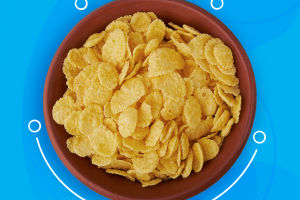Ah, bread. Is there anything more satisfying than cutting into a freshly baked loaf of bread, or sinking your teeth into a thick piece of toast covered in butter and jam?
Whether it's the building blocks of your sandwich or slathered in garlic adjacent to your pasta, bread is a comfort food and a staple for millions of folks around the world.
Bread isn't a monolith, either, as there are countless varieties of this carbohydrate-heavy food. It can be whole grain or processed white, homemade from your sourdough starter or braided challah for a special occasion. Or perhaps it's Indian naan or Ethiopian injera, ready and waiting to soak up the flavors.
While bread may have a bad reputation thanks to the popularity of low-carb diets, the good news is that it can also do a lot of great things for your body (and your mind) if you eat it every day. In fact, eating bread today just might make you feel better tomorrow! Curious to know how that works? Keep reading to find out what happens to your body when you eat bread every day.
Eating bread every day could mean you won't have to drink your bitter fiber supplement quite as much!
According to the American Heart Association, women under 50 should eat 21 to 25 grams of fiber every day, ideally from whole grain sources like wheat and oats. However, most women likely aren't getting their daily minimum fiber requirement, says licensed nutritionist Dr. Julie Miller Jones. "Many people eat only half the amount of fiber that is recommended," she said.
Fortunately, if you enjoy a slice or two of whole grain toast every morning with your eggs, you're well on your way to getting the fiber you need, says Miller Jones. "Diets with whole grains and fortified breads and cereals are important contributors of folic acid, thiamine, iron and dietary fiber," Miller Jones continued, adding, "Those who daily chose bread and cereal, especially some with bran and whole grains, are more likely to meet the fiber requirement." Of course, that doesn't mean you should wolf down a loaf of bread in a sitting, however. As in all things, moderation is key.
Bread is generally low in important nutrients like protein, fiber, vitamins and minerals. However, some types are enriched with extra micronutrients to boost their nutritional value and prevent deficiencies. Some common compounds added to bread include iron, riboflavin, thiamine and niacin. Though the US does not currently mandate fortifying food products like bread, many manufacturers choose to enrich their products with these key vitamins and minerals.
Other countries, including Canada, have strict rules and regulations that require the addition of certain nutrients to many types of flour. While each serving of enriched bread supplies only a small amount of the micronutrients you require, it can help you meet your needs when paired with an otherwise healthy diet.
Whole grains keep the entire grain intact, including the germ, endosperm, and bran. The bran, which is the hard, outer layer, is high in fiber.
The bran and germ also contain protein, fat, vitamins, minerals, and beneficial plant compounds, while the endosperm is mostly starch.
That’s why whole grains, including whole wheat, are higher in fiber and considered more nutritious than refined grains, which have been processed to remove the bran and germ.
Whole grains have been linked to numerous health benefits, including a decreased risk of type 2 diabetes, heart disease, and certain cancers.
However, it’s important to note that many manufacturers label breads “whole wheat” so that they appear healthier, even when they mostly consist of refined flour.
Look for breads that have 100% whole-wheat or whole-grain flour listed as their first ingredient and do not sneak unnecessary ingredients, such as added sugars or vegetable oils.


